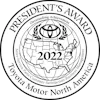
LEED Certified Dealer in MA
When somebody thinks of an automotive dealership like Wellesley Toyota, the words "environmentally friendly" are certainly not the first things that come to mind.
However, that is exactly what we are. As the first LEED Certified automotive dealership in New England, Wellesley Toyota is at the forefront of pushing the automotive industry, especially at the dealership level, to do business in a greener and more sustainable manner. LEED, which stands for "Leadership in Energy and Environmental Design" and is a rating developed and certified by the U.S. Green Building Council, shows that we are serious about changing the way automotive dealerships affect our environment.
So you may ask, what exactly makes Wellesley Toyota a LEED Silver building? The following design and construction initiatives, split up into 6 categories, make our dealership eligible for LEED Silver certification, as outlined by the U.S. Green Building Council. We're really proud of our facility, and we hope you can come check it out soon!

Sustainable Sites
This first category focuses on appropriate use of the building site that minimizes the impact on ecosystems and water resources.
- The renovated building is located on an appropriate and previously developed site (no prime farmland or wetland)
- The project is located in a community with a minimum density of 60,000 square feet per acre, thus promoting development in existing urban areas.
- Encourages alternative transportation with the low-emission Prius and Prius Plug-in line of vehicles.
- Provided charging stations and designated preferred parking spaces for Low Emitting Fuel Efficient vehicles
- Implemented a storm water management plan that directs storm water runoff into below ground infiltrators for recharging into the water table.
- Minimization of urban "heat islands", which occur when development replaces vegetation, by using highly reflective roof materials. This also maximizes efficiency in the warm parts of the year by reducing cooling loads, thereby lowering energy consumption for A/C.
Water Efficiency
The primary focus for this category is reducing the building's use of water.
- Use of high efficiency low flush toilets and faucets resulting in a 30% reduction in water usage.
- Landscaping uses plant species that require minimal watering and irrigation, reducing the use of water resources.
Energy and Atmosphere
This is one of the most important categories and focuses on conserving and reducing energy use through more efficient procedures and mechanical/operating systems.
- The new facility has a 30% larger footprint than the old building, but is 40% more efficient. This is due to the Energy Management System and energy efficient materials
- Purchase of green energy from Wellesley Municipal Light and Power - Wellesley Toyota is the largest purchaser of renewable energy in Wellesley.
- Recycling of automobile waste oil for heating during the winter months.
- Use of highly reflective roof materials and additional roof insulation to reduce energy costs in the winter months.
- Implementation of special smart Energy Management System to control the entire facility's HVAC systems and maximize efficiency. The system knows when the building will be empty (closed hours, holidays, etc.) and adjusts energy management accordingly.
- Energy efficient lighting systems (LEDs) with daylight "harvesting" (lights dim or off when enough daylight), and occupancy sensors (lights DDC Heading Font Face when room not in use).
- No CFC's (chlorofluorocarbons) used for the building's refrigeration equipment, eliminating the possibility of atmospheric ozone depletion
Materials and Resources
This category emphasizes using recycled, regional, and sustainable materials while minimizing construction waste.
- 55% of the old building's exterior walls, floors, and roof was reused and recycled for the new facility
- Use of recycled content materials throughout for steel, insulation, ceramic tile, acoustical tile, wood, etc.
75% of project's construction waste diverted from landfill. - Utilized regionally sourced materials to reduce transportation costs and emissions.
Indoor Environmental Quality
The purpose of this category is to promote better indoor air quality and access to daylight and views.
- Eliminating smoking in the building.
Use of special air filtration and entry mats to minimize pollutants in the building. - Increased use of outdoor air and ventilation to enhance comfort and health inside.
- Use of low emitting materials for paints, adhesives, carpets, etc. to reduce indoor air contaminates.
- Use of daylight as the primary light source with windows for all regularly occupied areas.
- Occupancy sensors that minimize electrical consumption when building is unoccupied and maximizing the use of daylight as the primary light source.
- Use of "Green" cleaning products for all housekeeping activities.
Innovation in Design
This category accounts for creative ideas and processes that exceed design goals and
- Use of LEED Certified interior furniture, wall paper, and tiles. These materials were sourced locally and built from LEED Certified manufacturing plants to minimize environmental impact.
- Crushed pre-existing asphalt at the dealership and reused it when laying down new asphalt, thus reducing the environmental impact of shipping in new asphalt.




